Nakshatras are one of the most fundamental aspects of Vedic astrology, holding immense significance even before the zodiac signs. Often described as lunar mansions, Nakshatras are celestial realms that represent the cosmic abode of karma. According to revered sages, these mansions act as a storehouse for the soul’s actions, encompassing past, present, and future lives. The ancient Vedic scriptures link the positions of the planets and stars to human karma, offering profound insights into our spiritual journey.
In the Vedic tradition, Nakshatras are often referred to as the 27 wives of Chandra (the Moon) and the daughters of Daksha Prajapati. The celestial marriage between the Moon and the Nakshatras symbolically represents the Moon's cycle through these 27 houses over the span of 27.3 days. This cosmic rhythm mirrors the harmonious alignment between time, destiny, and human existence.
Nakshatras help reveal one's prakriti (nature) and karmic path, offering essential guidance on auspicious timings for sacred rituals, career choices, and relationship dynamics. By understanding Nakshatras, individuals can gain profound clarity on their life’s purpose and better align themselves with the divine cosmic order.
The 27 Nakshatras
The word Nakshatra combines two Sanskrit words put together: Naksha, which generally means 'map,' and Tara, usually meaning 'star'; combined, they can just mean 'star map.' In Hindu astronomy and Indian Astrology, Nakshatra means the lunar mansions or constellations of the Moon that passes in successive course through its space roughly in a day. For a total count of the zodiacal 360, they are methodically mapped to be begun at Ashvini Nakshatra, reaching from 0° in Aries up to Revathi Nakshatra, which sets at 30° among Pisces; thus, an arc of 13°20'.
Here are the 27 Nakshatras in their sequential order:
- Ashwini
- Bharani
- Krittika
- Rohini
- Mrigashira
- Ardra
- Punarvasu
- Pushya
- Ashlesha
- Magha
- Purva Phalguni
- Uttara Phalguni
- Hasta
- Chitra
- Swati
- Vishakha
- Anuradha
- Jyeshtha
- Mula
- Purva Ashadha
- Uttara Ashadha
- Shravana
- Dhanishta
- Shatabhisha
- Purva Bhadrapada
- Uttara Bhadrapada
- Revati
The 27 Nakshatras: Celestial Influences in Vedic Astrology
The term Nakshatra, derived from the Sanskrit words Naksha (map) and Tara (star), represents the lunar mansions or star constellations in Vedic astrology. These Nakshatras play a pivotal role in shaping one's karmic journey and spiritual alignment. The Moon travels through these 27 Nakshatras in a 27.3-day cycle, spending roughly one day in each, which connects human experiences to the celestial bodies' rhythms.
Nakshatras are methodically placed within the 360° zodiac. From Ashvini Nakshatra at 0° Aries to Revati Nakshatra at 30° Pisces, each Nakshatra spans 13°20'. This system provides a detailed map of how the Moon’s journey impacts our life and actions.
List of the 27 Nakshatras: Unlocking Their Cosmic Influence
Ashwini – The Pioneering Healer
Bharani – The Sacred Vessel
Krittika – The Illuminating Flame
Rohini – The Nurturer and Creator
Mrigashira – The Curious Seeker
Ardra – The Intense Transformation
Punarvasu – The Restorer and Renewed
Pushya – The Protective Nourisher
Ashlesha – The Hidden Serpent
Magha – The Regal Ancestor
Purva Phalguni – The Embodiment of Love
Uttara Phalguni – The Supporter of Commitments
Hasta – The Creative Hand
Chitra – The Shining Pearl
Swati – The Independent Traveler
Vishakha – The Victorious Leader
Anuradha – The Loyal Companion
Jyeshtha – The Powerful Protector
Mula – The Root of Transformation
Purva Ashadha – The Invincible Leader
Uttara Ashadha – The Conqueror of the World
Shravana – The Listener to Divine Wisdom
Dhanishta – The Prosperous Drummer
Shatabhisha – The Hundred Healers
Purva Bhadrapada – The Seeker of Spiritual Knowledge
Uttara Bhadrapada – The Water Bearer
Revati – The Guiding Protector
Each Nakshatra represents a unique energy that influences various aspects of life, such as personality traits, life purpose, and timings for rituals. By understanding these celestial energies and the deities that govern each Nakshatra, one can gain deeper insights into their personal journey and connect with universal rhythms. Whether you’re seeking answers about your career path, relationships, or spiritual growth, the Nakshatras offer valuable wisdom to navigate your life's path.
The Nakshatras and Their Governing Planets
In Vedic astrology, each Nakshatra is ruled by a specific planet, which imparts its unique energies and influences the characteristics of that Nakshatra. The relationship between the planets and the Nakshatras is one of the fundamental ways to understand an individual’s personality, karmic path, and life challenges. Each Nakshatra is divided into 4 Padas (quarters), and each Pada is ruled by a different planet. This division brings further nuances to the astrological interpretation, as the placement of a planet in a specific Pada significantly affects its influence.
When a planet is placed in a Pada that corresponds to the highest vibration of that planet, it is said to be exalted. This positioning amplifies the planet’s positive qualities, leading to strength, clarity, and an enhanced ability to manifest its qualities in the individual’s life. Conversely, when a planet occupies a Pada that dampens or suppresses its natural qualities, it is considered to be debilitated, resulting in the planet's energies being suppressed or expressed in a less favorable manner. These placements have a profound impact on a person’s experiences and can guide the choice of remedies in Vedic astrology.
Nakshatras and Their Four Padas: Unlocking Personal Traits and Destiny
In Vedic astrology, each Nakshatra is further divided into 4 Padas, each spanning 3°20'. These Padas are finer divisions that hold deep significance in understanding an individual’s character, behavior, and destiny. Each Pada reflects distinct qualities that are closely tied to the individual’s astrological chart, offering deeper insights into personal strengths, emotional tendencies, and life’s journey.
The Padas are closely associated with the Navamsa chart, which is an essential tool in Vedic astrology for determining the spiritual and material aspects of life. The planet ruling each Pada influences these qualities, and its position within the Pada can further refine how a person expresses their traits. Whether it’s attitudes, emotional responses, or life goals, the Padas offer an essential understanding of how the energies of the Nakshatras manifest in daily life, making them a crucial component in personalized astrological readings.
Nakshatras and Career Path: How the Moon’s Nakshatra Influences Your Profession
In Vedic astrology, the Moon’s Nakshatra plays a vital role in shaping an individual’s career and life path, along with the Lagna (Ascendant). These Nakshatras have specific characteristics and energies that resonate with different professions, talents, and life purposes. The Nakshatra of the Moon indicates the underlying tendencies and inclinations of an individual, while the Lagna points to the external personality and approach to life's challenges.
For instance, Ashwini Nakshatra, ruled by Ketu, is associated with healing and pioneering work. Individuals born under this Nakshatra often excel in fields that require innovative, trailblazing approaches, such as medicine, research, or alternative healing. On the other hand, Pushya Nakshatra, ruled by Saturn, is linked with roles that focus on nourishment, administration, and organization, making it ideal for careers in healthcare, teaching, and management.
It is the Pada within each Nakshatra that further refines one’s career traits, as it determines the deeper astrological influence that shapes an individual’s occupational strengths and weaknesses. Understanding these nuances allows for a more precise determination of the most suitable career paths and the optimal timing for career-related decisions.
Naming Conventions in Vedic Astrology: The Power of the Moon’s Nakshatra
In Vedic astrology, naming conventions are a sacred tradition rooted in the Moon’s Nakshatra and its corresponding Pada. According to ancient Vedic customs, the phonetic syllable linked to the Nakshatra where the Moon is positioned at birth serves as the source for the first letter of one's name. This practice is believed to align the individual with their cosmic design and energies, ensuring that they vibrate in harmony with the universal forces.
By choosing a name based on the Nakshatra, one taps into the astrological energies that influence their life path, helping them to live a more balanced and successful life. This practice creates a resonance between the individual’s identity and the cosmic order, fostering spiritual alignment, personal growth, and success in their endeavors.
Nakshatra Compatibility in Relationships: Aligning with Cosmic Forces
In Vedic astrology, the Moon’s Nakshatra plays a crucial role in assessing relationship compatibility. The Nakshatra of the Moon represents the emotional nature and mental tendencies of an individual, which are vital for establishing emotional rapport and interpersonal understanding between partners. By analyzing the Moon’s Nakshatra, astrologers can determine how well a couple will align emotionally, spiritually, and mentally.
A traditional system known as Nakshatra Porutham or Ashtakoota matching is used to assess compatibility. This method evaluates eight key factors such as emotional compatibility, mutual understanding, and shared values, ensuring a harmonious and lasting relationship. By aligning with the cosmic design, this system helps couples build a relationship that resonates with their karmic paths, fostering long-term happiness and fulfilment.
Psychological and Emotional Insights Through the Moon’s Nakshatra
In Vedic astrology, the Moon governs the mind and emotional well-being, making its Nakshatra, known as Janma Nakshatra, a key indicator of an individual’s inner world. This Nakshatra reflects how one processes emotions, reacts to challenges, and displays instinctive behaviors. The Moon’s Nakshatra provides deep insights into the psychological and emotional state of a person, revealing their mental framework and responses to life's ups and downs.
By analyzing the Janma Nakshatra in the birth chart, astrologers can better understand how an individual’s mind works, including their emotional triggers and coping mechanisms. This insight is invaluable for addressing mental health concerns, guiding emotional growth, and enhancing personal relationships by creating a deeper understanding of emotional patterns.
The Dasha System: Understanding Planetary Periods in Vedic Astrology
The Vimshottari Dasha system is a foundational aspect of Vedic astrology, mapping the 120-year planetary cycle based on the Moon's Nakshatra at the time of birth. This system outlines the sequence of planetary influences that guide an individual’s life, including major events, opportunities, and challenges. Each Dasha period is ruled by a specific planet, and the energies of that planet shape the individual's experiences during that time.
By analyzing the Dasha periods and their connections to the Moon’s Nakshatra, astrologers can predict the timing of significant life events, from career milestones to personal relationships, offering valuable insights into the timing of actions and remedies. Understanding the Vimshottari Dasha allows for better alignment with cosmic rhythms, helping individuals navigate their karmic path with greater awareness.
Characteristics of the 27 Nakshatras: Unlocking Their Cosmic Influence
In Vedic astrology, the 27 Nakshatras, or lunar mansions, offer profound insights into an individual’s personality, life path, and karmic patterns. Each Nakshatra is ruled by a unique planet and deity, imparting specific energies that influence key aspects of life, such as relationships, career, and emotional well-being. The symbolism, elemental qualities, and compatibility with other Nakshatras provide an intricate map of an individual’s destiny and inner world.
Here’s an overview of the characteristics of each Nakshatra:
1. Ashwini Nakshatra
Ruling Planet : Ketu
Deity : Ashwini Kumaras (Healers of the Gods)
Symbol : Horse's head
Strengths : Healing abilities, leadership, and courage
Weaknesses : Impulsiveness and impatience
Compatibility : Bharani, Magha
Favorable Aspects : Healing professions, swift decision-making, travel
2. Bharani Nakshatra
Ruling Planet : Venus
Deity : Yama (God of Death)
Symbol : Yoni (Womb)
Strengths : Endurance, adaptability, and transformative abilities
Weaknesses : Stubbornness and possessiveness
Compatibility : Ashwini, Purva Phalguni
Favorable Aspects : Creative pursuits, family-oriented goals, artistic ventures
3. Krittika Nakshatra
Ruling Planet : Sun
Deity : Agni (Fire God)
Symbol : Razor or Knife
Strengths : Clarity, resilience, and analytical skills
Weaknesses : Harshness and over-dominance
Compatibility : Pushya, Anuradha
Favorable Aspects : Leadership, teaching, and strategic roles
4. Rohini Nakshatra
Ruling Planet : Moon
Deity : Brahma (Creator God)
Symbol : Chariot
Strengths : Artistic skills, emotional depth, and magnetism
Weaknesses : Jealousy and emotional dependency
Compatibility : Mrigashira, Hasta
Favorable Aspects : Agricultural ventures, wealth-building, family affairs
5. Mrigashira Nakshatra
Ruling Planet : Mars
Deity : Soma (Moon God)
Symbol : Deer’s head
Strengths : Intellectual pursuits, adaptability, and charm
Weaknesses : Restlessness and indecisiveness
Compatibility : Chitra, Revati
Favorable Aspects : Travel, research, creative arts
6. Ardra Nakshatra
Ruling Planet : Rahu
Deity : Rudra (Storm God)
Symbol : Teardrop
Strengths : Problem-solving, resourcefulness, and resilience
Weaknesses : Emotional volatility and rebelliousness
Compatibility : Swati, Satabhisha
Favorable Aspects : Innovations, spiritual pursuits, overcoming adversity
7. Punarvasu Nakshatra
Ruling Planet : Jupiter
Deity : Aditi (Mother of Gods)
Symbol : Bow and quiver
Strengths : Compassion, adaptability, and renewal abilities
Weaknesses : Naivety and inconsistency
Compatibility : Pushya, Revati
Favorable Aspects : Creative pursuits, spiritual growth, and teaching
8. Pushya Nakshatra
Ruling Planet : Saturn
Deity : Brihaspati (Guru of the Gods)
Symbol : Cow’s udder
Strengths : Generosity, devotion, and practicality
Weaknesses : Over-cautiousness and emotional suppression
Compatibility : Anuradha, Uttara Bhadrapada
Favorable Aspects : Teaching, parenting, and spiritual growth
9. Ashlesha Nakshatra
Ruling Planet : Mercury
Deity : Naga (Serpent God)
Symbol : Coiled serpent
Strengths : Strategic thinking, intelligence, and adaptability
Weaknesses : Manipulativeness and emotional detachment
Compatibility : Jyeshtha, Swati
Favorable Aspects : Research, counseling, leadership
10. Magha Nakshatra
Ruling Planet : Ketu
Deity : Pitris (Ancestral Spirits)
Symbol : Throne
Strengths : Leadership, respect for tradition, and charisma
Weaknesses : Pride, dominance, and resistance to change
Compatibility : Ashwini, Bharani
Favorable Aspects : Leadership, ancestral guidance, and public service
Unfavorable Aspects : Overbearing attitude, lack of flexibility
11. Purva Phalguni Nakshatra
Ruling Planet : Venus
Deity : Bhaga (God of Wealth)
Symbol : Hammock
Strengths : Charm, social skills, and artistic talents
Weaknesses : Laziness, indulgence, and over-dependence on others
Compatibility : Bharani, Magha
Favorable Aspects : Creative arts, partnerships, and socializing
Unfavorable Aspects : Procrastination, lack of discipline
12. Uttara Phalguni Nakshatra
Ruling Planet : Sun
Deity : Aryaman (God of Contracts)
Symbol : Bed or cot
Strengths : Loyalty, leadership, and organizational skills
Weaknesses : Stubbornness, overburdening oneself, and rigidity
Compatibility : Hasta, Revati
Favorable Aspects : Long-term commitments, community service
Unfavorable Aspects : Over-attachment, difficulty adapting
13. Hasta Nakshatra
Ruling Planet : Moon
Deity : Savitar (Sun God)
Symbol : Hand
Strengths : Craftsmanship, communication, and wit
Weaknesses : Perfectionism, control issues, and emotional instability
Compatibility : Chitra, Rohini
Favorable Aspects : Practical work, creative arts, and negotiations
Unfavorable Aspects : Overthinking, possessiveness
14. Chitra Nakshatra
Ruling Planet : Mars
Deity : Tvashtar (Celestial Architect)
Symbol : Pearl or shining jewel
Strengths : Creativity, confidence, and innovation
Weaknesses : Vanity, impulsiveness, and arrogance
Compatibility : Swati, Hasta
Favorable Aspects : Architecture, design, and leadership
Unfavorable Aspects : Overambition, conflicts with authority
15. Swati Nakshatra
Ruling Planet : Rahu
Deity : Vayu (Wind God)
Symbol : Coral
Strengths : Flexibility, communication, and resilience
Weaknesses : Restlessness, indecision, and over-dependence
Compatibility : Ardra, Punarvasu
Favorable Aspects : Trade, public relations, and travel
Unfavorable Aspects : Unreliability, emotional detachment
16. Vishakha Nakshatra
Ruling Planet : Jupiter
Deity : Indra-Agni (Dual Gods of Energy and Transformation)
Symbol : Triumphal arch
Strengths : Focus, adaptability, and goal-oriented nature
Weaknesses : Impatience, over-competitiveness, and stubbornness
Compatibility : Anuradha, Mula
Favorable Aspects : Leadership, transformation, and teamwork
Unfavorable Aspects : Over-aggression, interpersonal conflicts
17. Anuradha Nakshatra
Ruling Planet : Saturn
Deity : Mitra (God of Friendship and Partnership)
Symbol : Lotus flower
Strengths : Perseverance, devotion, and relationship-building
Weaknesses : Emotional dependency, possessiveness, and over-seriousness
Compatibility : Pushya, Uttara Bhadrapada
Favorable Aspects : Partnership ventures, spiritual growth, and counseling
Unfavorable Aspects : Challenges with emotional openness
18. Jyeshtha Nakshatra
Ruling Planet : Mercury
Deity : Indra (King of the Gods)
Symbol : Circular amulet
Strengths : Leadership, courage, and strategic thinking
Weaknesses : Arrogance, self-importance, and emotional rigidity
Compatibility : Ashlesha, Revati
Favorable Aspects : Authority roles, intellectual pursuits, and administration
Unfavorable Aspects : Overconfidence, tendency to dominate
19. Mula Nakshatra
Ruling Planet : Ketu
Deity : Nirriti (Goddess of Destruction)
Symbol : Tied roots
Strengths : Deep-rooted knowledge, adaptability, and resilience
Weaknesses : Recklessness, destructive tendencies, and emotional intensity
Compatibility : Vishakha, Purva Ashadha
Favorable Aspects : Spiritual transformation, research, and inquiry
Unfavorable Aspects : Impulsiveness, disruption in relationships
20. Purva Ashadha Nakshatra
Ruling Planet : Venus
Deity : Apas (Water Goddess)
Symbol : Elephant tusk
Strengths : Charisma, enthusiasm, and adaptability
Weaknesses : Over-indulgence, lack of focus, and procrastination
Compatibility : Mula, Uttara Ashadha
Favorable Aspects : Creative work, emotional expression, and social success
Unfavorable Aspects : Disorganization, lack of discipline
21. Uttara Ashadha Nakshatra
Ruling Planet : Sun
Deity : Vishwadevas (Universal Gods)
Symbol : Elephant tusk
Strengths : Perseverance, leadership, and integrity
Weaknesses : Rigidity, overburdening oneself, and lack of spontaneity
Compatibility : Purva Ashadha, Revati
Favorable Aspects : Leadership roles, justice-oriented work, and community service
Unfavorable Aspects : Challenges with adaptability, overwork
22. Shravana Nakshatra
Ruling Planet : Moon
Deity : Vishnu (Preserver God)
Symbol : Ear
Strengths : Listening skills, learning, and emotional intelligence
Weaknesses : Over-dependence on tradition, emotional insecurity
Compatibility : Dhanishta, Anuradha
Favorable Aspects : Teaching, counseling, and spiritual guidance
Unfavorable Aspects : Emotional rigidity, lack of innovation
23. Dhanishta Nakshatra
Ruling Planet : Mars
Deity : Eight Vasus (Celestial Beings of Abundance)
Symbol : Drum
Strengths : Hardworking, musical talents, and social skills
Weaknesses : Stubbornness, competitiveness, and arrogance
Compatibility : Shravana, Purva Bhadrapada
Favorable Aspects : Leadership, creative arts, and success in ventures
Unfavorable Aspects : Impulsiveness, material excess
24. Shatabhisha Nakshatra
Ruling Planet : Rahu
Deity : Varuna (God of Cosmic Waters)
Symbol : 100 stars
Strengths : Healing abilities, intuition, and problem-solving
Weaknesses : Isolation, emotional detachment, and secrecy
Compatibility : Ardra, Swati
Favorable Aspects : Scientific pursuits, innovation, and healing
Unfavorable Aspects : Over-isolation, mistrust
25. Purva Bhadrapada Nakshatra
Ruling Planet : Jupiter
Deity : Aja Ekapada (One-footed Goat, Fire Dragon)
Symbol : Two-faced man
Strengths : Visionary thinking, determination, and spirituality
Weaknesses : Extremism, mood swings, and selfishness
Compatibility : Uttara Bhadrapada, Pushya
Favorable Aspects : Spirituality, teaching, and philanthropy
Unfavorable Aspects : Confusion, emotional imbalance
26. Uttara Bhadrapada Nakshatra
Ruling Planet : Saturn
Deity : Ahir Budhnya (Serpent of the Depths)
Symbol : Twin fish
Strengths : Compassion, perseverance, and stability
Weaknesses : Passivity, emotional withdrawal, and lack of ambition
Compatibility : Revati, Anuradha
Favorable Aspects : Long-term goals, spiritual growth
Unfavorable Aspects : Over-passivity, reluctance to act
27. Revati Nakshatra
Ruling Planet : Mercury
Deity : Pushan (Nourisher and Protector)
Symbol : Fish
Strengths : Generosity, emotional intelligence, and adaptability
Weaknesses : Over-sensitivity, escapism, and lack of focus
Compatibility : Punarvasu, Uttara Phalguni
Favorable Aspects : Arts, spirituality, and protection-oriented roles
Unfavorable Aspects : Emotional overwhelm, disorganization
How to Calculate Your Nakshatra: Understanding Your Lunar Position
In Vedic astrology, your Nakshatra is determined by the exact position of the Moon at the time of your birth. The Moon passes through the 27 Nakshatras, each spanning 13°20' of the zodiac belt. To calculate your Nakshatra, you need to know the precise date, time, and place of birth, as these details determine the Moon’s position at the moment you were born.
Once the Moon’s position is identified, it is mapped to one of the 27 Nakshatras. This can be done through software or an online calculator that computes the exact placement based on your birth details. In manual calculation, the longitude of the Moon is measured from 0° Aries to 360° Pisces, and this degree is matched to the corresponding Nakshatra.
This method of Nakshatra calculation allows astrologers to identify the Moon’s Nakshatra and offer insights into your personality, life path, and karmic influences, aligning you with your cosmic blueprint for a deeper understanding of your soul’s journey.
Using Nakshatra for Career and Relationship Compatibility: Aligning with Your Cosmic Blueprint
In Vedic astrology, Nakshatras play a significant role in guiding both career paths and relationship compatibility. Each Nakshatra holds a unique energy that influences an individual’s temperament, skills, and interpersonal traits. By understanding the ruling planet and deity of a Nakshatra, astrologers can reveal a person's inherent strengths and preferences related to various pursuits, such as leadership, creativity, analysis, or nurturance.
When it comes to career, Nakshatras help individuals align with professions that resonate with their cosmic nature, allowing them to thrive in fields that suit their innate abilities. For example, a Nakshatra ruled by Mars might encourage a career in leadership, research, or sports, while one ruled by Venus may lead to success in creative arts or relationship-based careers.
In relationships, Nakshatras offer vital insights into emotional compatibility, value systems, and mutual understanding. The traditional method of Nakshatra Porutham or Ashtakoota matching evaluates how the Moon’s Nakshatras of two individuals interact. Certain Nakshatras harmonize naturally due to complementary qualities. For example, the nurturing energy of Rohini Nakshatra aligns well with the intellectual curiosity of Mrigashira Nakshatra, fostering a balanced and fulfilling relationship.
Using Nakshatras as a tool, individuals can make informed decisions about both career and life partnerships, creating alignment with their cosmic blueprint. This system enables a more harmonious and successful life path, ensuring that individuals attract opportunities and relationships that resonate with their true nature.
Conclusion: The Timeless Wisdom of Nakshatras in Vedic Astrology
In Vedic astrology, Nakshatras serve as a profound cosmic bridge, connecting the celestial realm with human life. These lunar mansions guide every aspect of our existence, from personality and strengths to karmic patterns and life paths. Each Nakshatra, governed by its ruling planet, deity, and element, offers valuable insights into a person’s tendencies, profession choices, and relationships, making them a powerful tool for self-awareness.
The Janma Nakshatra, or the Nakshatra under which the Moon was positioned at birth, is particularly influential in determining an individual’s emotional nature, career choices, and marriage compatibility. With four Padas under each Nakshatra, detailed insights into personal characteristics, career paths, and spiritual growth are revealed. By categorizing Nakshatras based on their gunas, elements, and yoni, one gains a deeper understanding of how cosmic energies manifest in our lives.
From personal growth and career alignment to fostering harmonious relationships, Nakshatras offer a holistic approach to understanding our cosmic blueprint. Their timeless wisdom links the microcosm of human experience with the macrocosm of the universe, allowing individuals to navigate their destiny with clarity, purpose, and alignment with the universal rhythms.

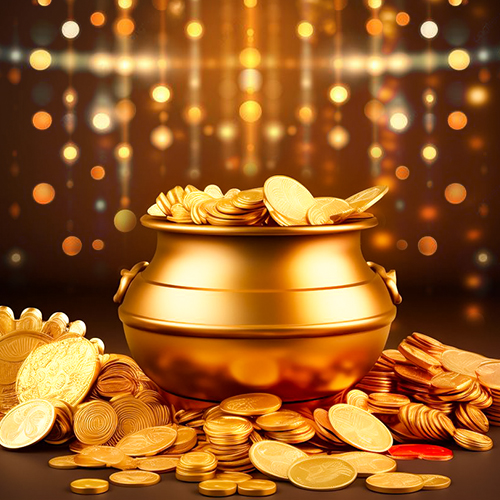
-in-Astrology.jpg)

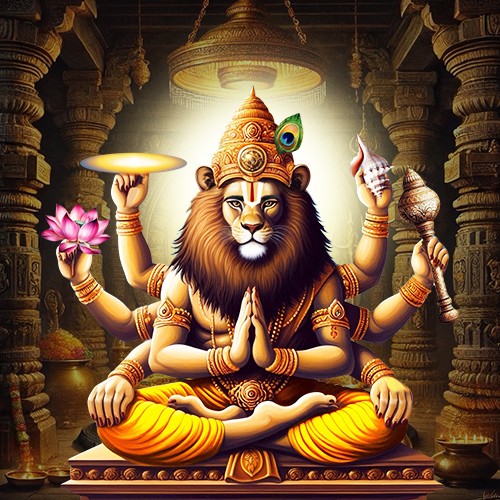
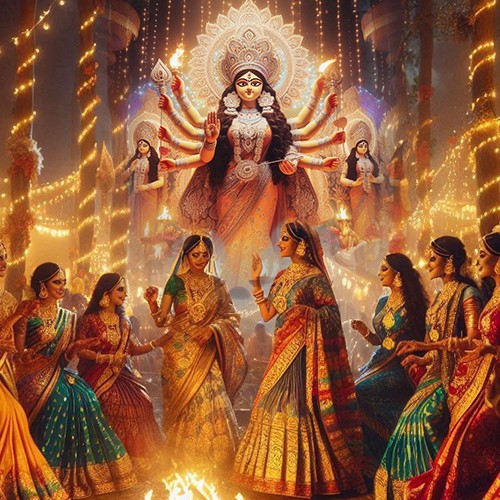
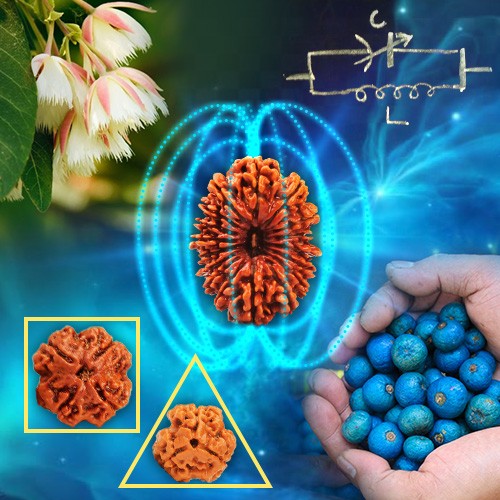

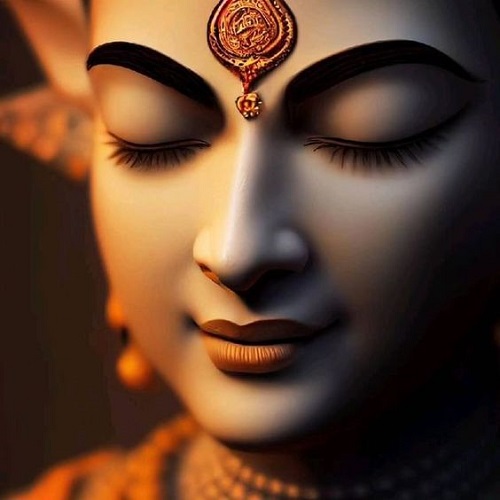
.jpg)

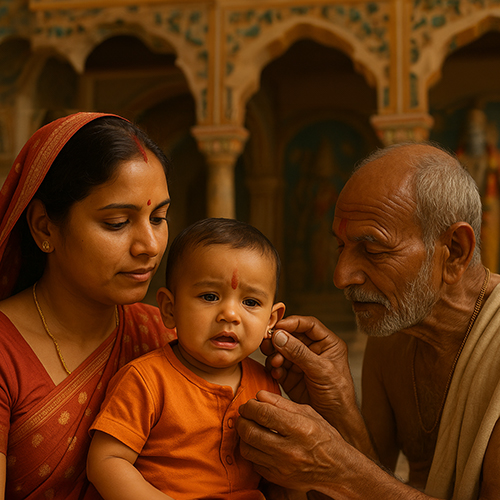

Comments 0
Leave your thought here